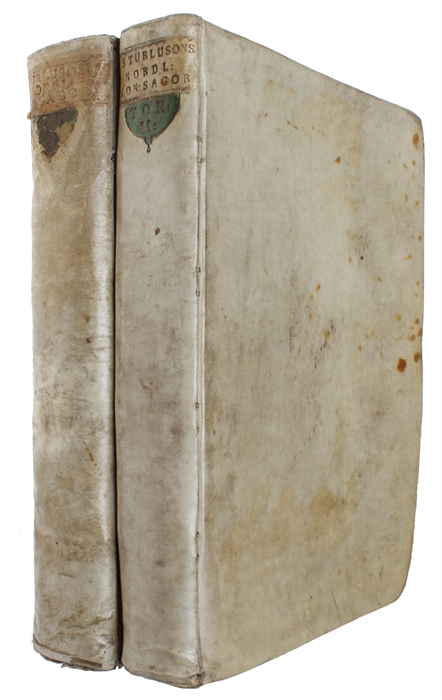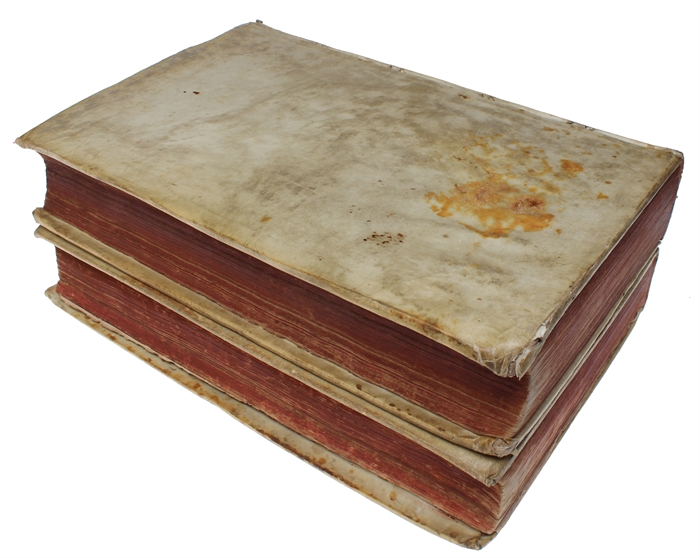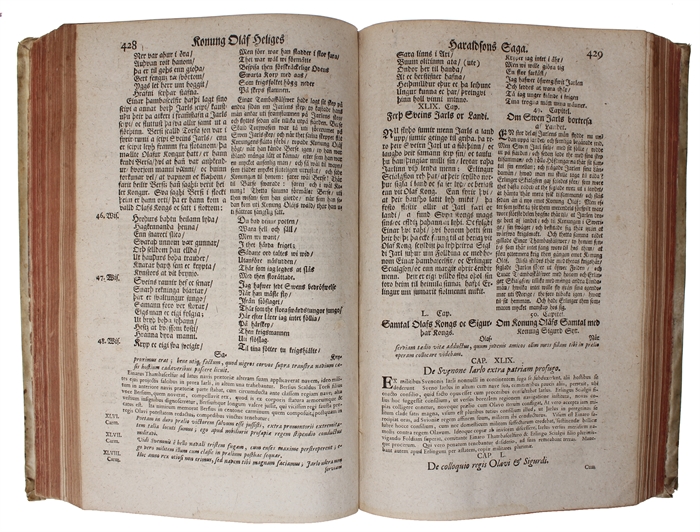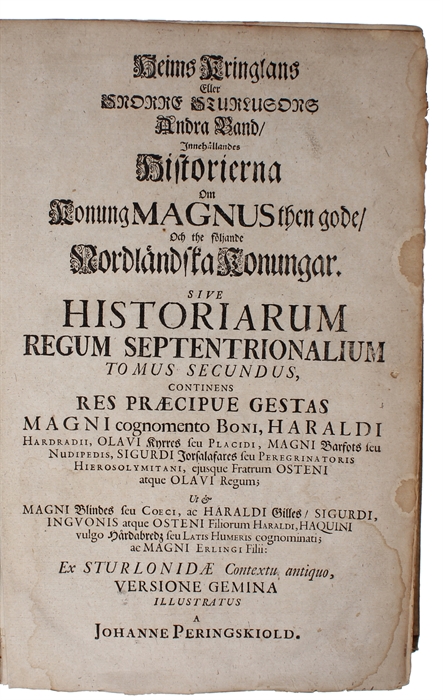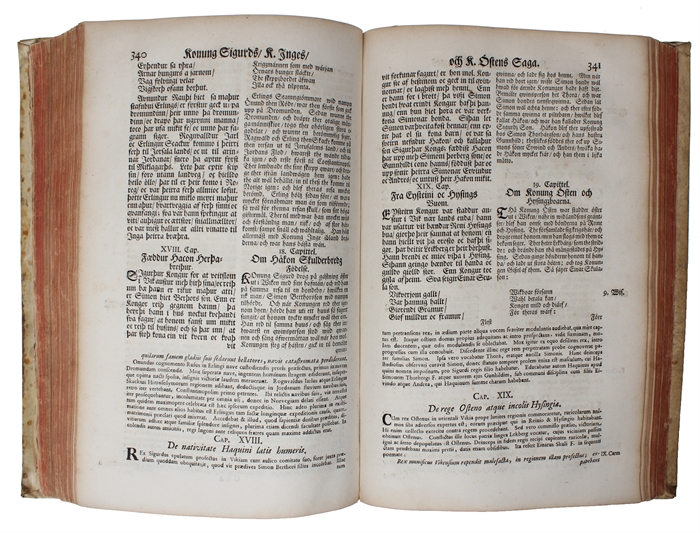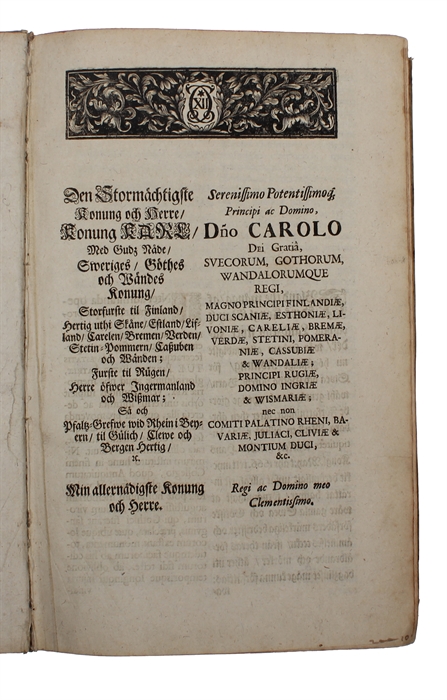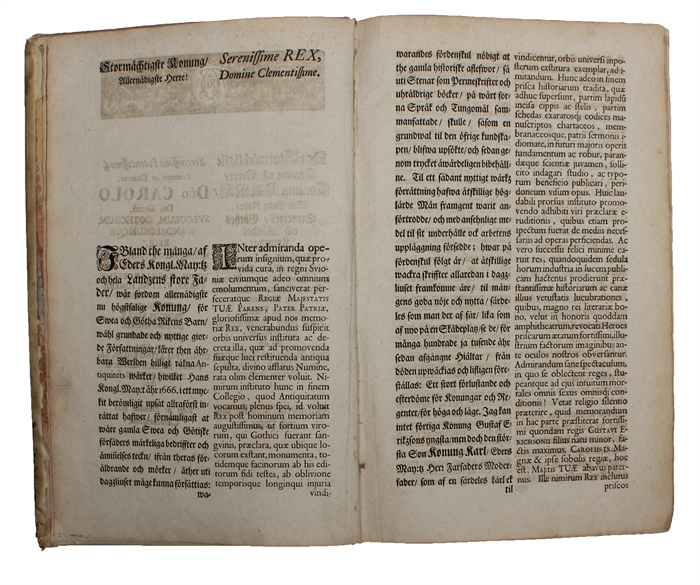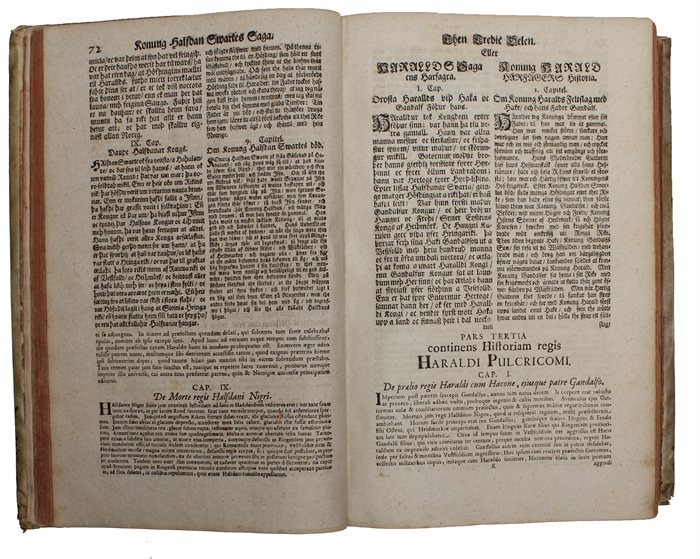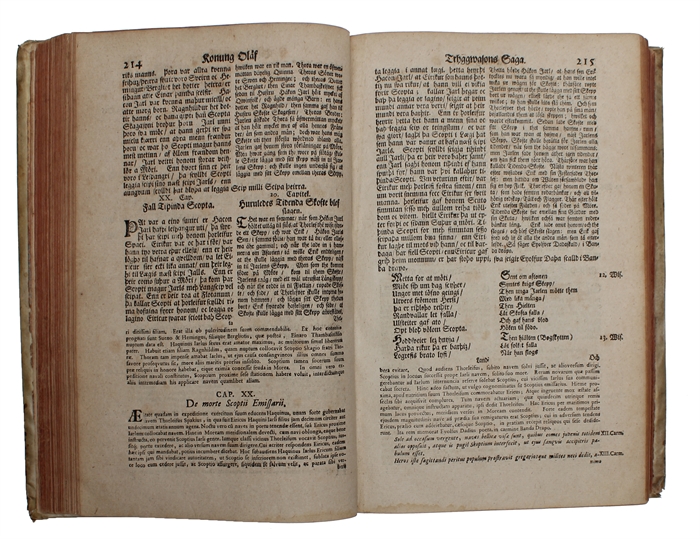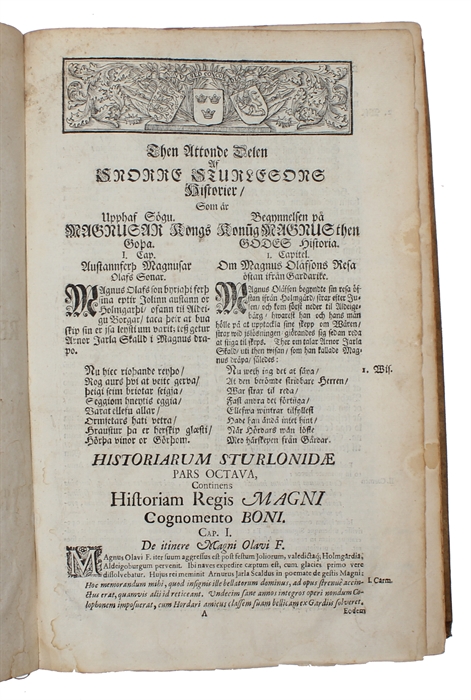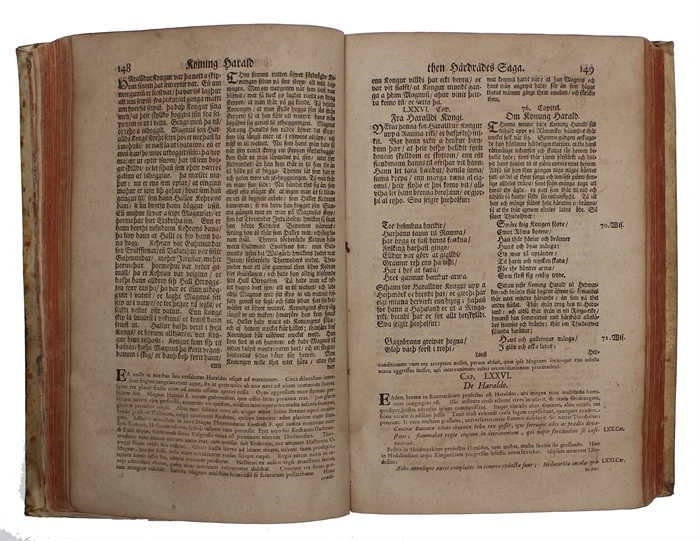THE EDITIO PRINCEPS OF THE FIRST FULL COLLECTION OF THE "HEIMSKRINGLA", THE SAGAS, IN THE ORIGINAL ICELANDIC
STURLASON, SNORRI (SNORRE STURLASSON / STURLUSON).
Heims Kringla/ Eller Snorre Sturlusons Nordländiske Konunga Sagor. Sive Historiae Regum Septentrionalium. Ante secula quinque, patrio sermone antiquo Conscriptae, Quas Ex Manuscriptis Codicibus edidit, Versione gemina, notisque brevioribus, Indici Poëtico vel Rerum, sparsim insertis, Illustravit Johann: Peringskiöld. 2 vols.
Stockholm, Literis Wankiwianis, 1697.
Folio. 2 contemporary, uniform full vellum bindings with coloured, gilt title- and tome- compartments to spines. Cords showing at inner hinges, but bindings solid and tight. Volume 1 with worn capitals and corners, and gilt compartments quite rubbed. general wear to boards and a stain to back board. Engraved book plate to inside of front board. Two old owner's names to title-page. Ttile-page dusty and with a bit of brownspotting. Otherwise internally in splendid condition, very nice, clean, and fresh. Front board of volume 2 a bit warped and back board with some staining. First two leaves loosening, but still attached, and with some damp staining. Otherwise internally very nice and clean, with just occasional light damp staining. (24), 830; (2), 486, (128) pp. With the engraved device to the title-page of volume 1.
The magnificent editio princeps of Snorre's seminal "Heimskringla", his collection of the original sagas of the old Norse kings - beginning with the mythological prehistory going back to Odin and Asgard - printed for the first time in the original Icelandic, accompanied by translations into Swedish and Latin, also being the first translations into these languages. The "Heimskringla" constitutes one of the most famous and influential works of medieval Icelandic literature and a cornerstone of Norse mythology. These seminal sagas are of foundational importance not only to Norse mythology and Scandinavian history, however, but also to the medieval history of the Western world in general, famously narrating expeditions to many other European countries, most obviously England (e.g. the famous sacking of Southwark and the Battle of Hastings), but also many other parts of the world, ranging as far as Palestine (the saga of Sigurd the Crusader, where the Norwegian fleet is attacked by Arab Muslim pirates), Constantinople, Syria, and Sicily (the Saga of Harald Hadrada, which narrates his expedition to the East), etc. "Although the expeditions of the Norsemen to America were not mentioned in the manuscript copies of Sturluson's sagas, Peringskiöld introduces references to these expeditions in vol. I, pp. 325-348." (Sabin) "Snorri's contribution to the literature of Iceland is of inestimable importance. It was he who collected and preserved the great prose "Edda" (first published in 1665), which contains, with some tracts on composition and metre of considerable importance, the "Gylfaginning". Part mythology and part history, it is this which gives us the earliest version of the story of Aesir and their leader Odin, whose invasion of the North became the religion of Scandinavia. From this were spun the "Niebelungenlied" and "Beowulf"; ... Even more important than this is Snorri's own contribution, the great collections of the Sagas of the Norse Kings, called the "Heims Kringla", first published in full in 1697 in the original Icelandic, with translations into Latin and Swedish, edited by Johan Peringskiöld." (PMM) A few extracts of the work had been translated into Danish during the 16th and 17th centuries, with a Danish translation appearing in 1633, but the original Icelandic text had not been printed before and appeared for the first time - under the title "Heimskringla", which is the first known use of the name - with this magnificent publication, which also contains the first edition of the Latin translation and the first edition of the Swedish translation. The work is sought-after and difficult to come by. Sabin 85484 ("The New York Public Library has a copy of vol. I, but lacks vol. 2. The collation of vol. 2 is supplied from the "...Catalogue of the Icelandic Collection" in the Cornell University Library")
"In addition to this, there are early accounts of the western voyages of Erik the Red and Leif the Lucky and the early settlements on "Vinland", as the Norsemen called the north-eastern coast of American continent; and the equally daring eastern voyage of Sigurd the Crusader." (PMM)
Fiske 535
PMM 168
Order-nr.: 60375

